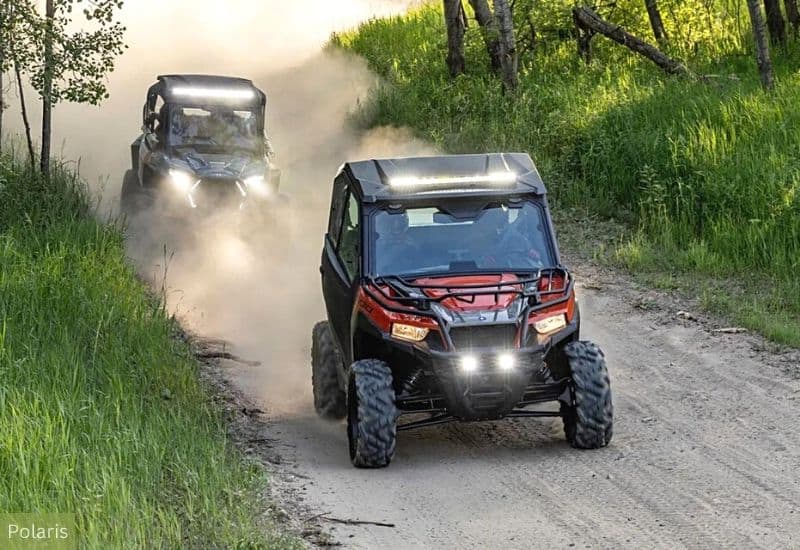Side-by-sides, also known as utility task vehicles (UTVs), recreational off-highway vehicles (ROVs), or light recreational vehicles (LRVs), have exploded in popularity over recent years among outdoor enthusiasts.
Offering power and capabilities beyond a typical all-terrain vehicle (ATV), side-by-sides allow riders to haul gear, explore trails, and perform light to medium-duty tasks like plowing snow.
But how long do these impressive multipurpose machines last in real-world use?
Many factors impact longevity, but with proper care and maintenance, the best side-by-side models can log over 5,000 hours or 10,000 miles before requiring repairs, lasting anywhere from 5-10 years for a typical recreational user.
That said, many riders own UTVs that are still tearing up the trails after 10,000+ hours, 20,000+ miles, and 10+ years later.
If you want to be one of these owners, keep reading.
Because in this blog post about side-by-side durability, will cover what impacts how long a side-by-side lasts, maintenance tips to increase life span, how to get the most value from your investment, and when to consider replacing your side-by-side.
Expected Lifespan for Side-By-Sides
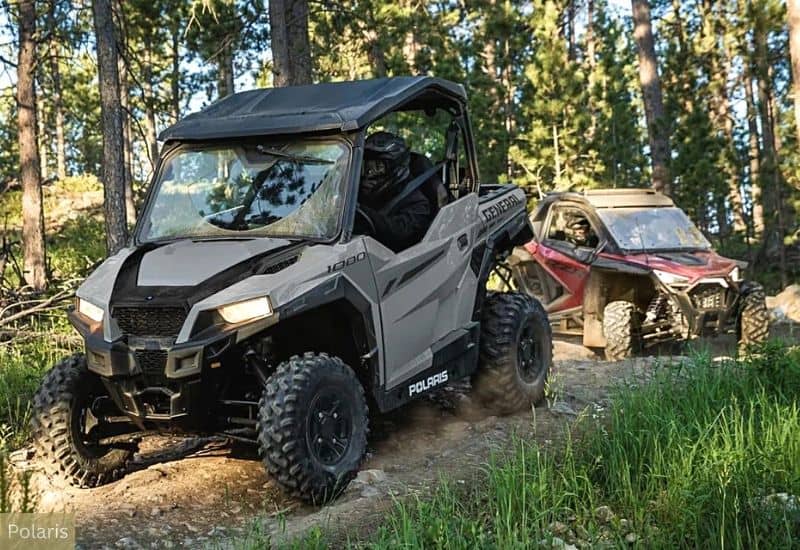
Quality side-by-sides can generally log over 5,000 hours or 10,000 miles before needing repairs when maintained according to the manufacturer’s recommendations. This typically equals 5 to 10 years of life expectancy based on average recreational use.
For example, if a side-by-side owner drives their machine for about 100-200 hours per year on average for weekend adventures and periodic joyrides, they could expect around 5-10 years before exceeding that 5,000-hour lifespan.
However, on the longer end, some owners have reported models lasting reliably for over 10 years and reaching over 10,000 hours and 20,000 miles!
Exceeding 5,000 hours though, requires diligent care and maintenance to keep things running smoothly because all the below factors can dramatically reduce the lifespan and performance of a side-by-side.
- Insufficient routine upkeep, such as neglecting to change the oil and oil filter, replace the air filter, and lubricate fittings.
- Intensive commercial use rather than light recreational use.
- Operating in extreme climates or challenging conditions.
- Failure to correct minor mechanical issues early.
Following the maintenance best practices covered later in this guide can help your side-by-side last for many years to come and allow you to get the most out of your machine!
There is a point though in every UTV’s lifespan, that it becomes harder and harder to justify keeping it running rather than replacing your faithful companion with a newer model.
What Impacts How Long a Side-By-Side Lasts?
A side-by-side vehicle’s longevity depends on several key factors tied to ownership and usage, which we’ve listed below.
Rider Care & Maintenance
Like any machine, proper maintenance is key for durability and longevity.
Side-by-sides that receive proper upkeep following the manufacturer’s guidelines on fluid changes, lubrication, inspections, etc…, will always last longer than ones that don’t.
Proper maintenance is just part of the equation though, as regularly washing, fixing problems early, and storing properly, also greatly impact the lifespan of a UTV.
Operating Conditions & Usage
How and where you ride your side-by-side can significantly impact its longevity.
Light recreational use puts minimal stress on components.
Side-by-sides used lightly for weekend joyrides or outdoor adventures can provide years of trouble-free use, while the same make/model used commercially with intense daily use can deteriorate in just 1-3 years.
In addition, frequent exposure to mud, streams, hills, and other taxing terrain wears components much faster than light recreational trail riding.
Carrying heavier gear and loads long-term can also strain the engine, transmission, suspension, frame, and other systems, leading to early wear and tear issues.
Even excessive idling can shorten the life of a side-by-side, as it can cause incomplete combustion buildup, which can damage engine components like cylinders, spark plugs, and exhaust systems over time.
Environmental Factors
The climate, and weather your side-by-side faces impact its longevity, as parts wear and corrode faster when exposed to harsh elements.
Protecting it from UV rays, precipitation, rodents, and extreme temperature swings can add years of useful life to the machine.
Generally, UTVs operated in very hot, cold, humid, or coastal climates experience faster weathering and corrosion issues.
Also, engine and suspension components deteriorate quicker in salty air or freezing winters.
Using preventative anti-corrosion treatments helps, but frequent intense weather exposure will always accelerate wear.
In addition, leaving your side-by-side parked outside long-term leaves it vulnerable to UV damage, dirt/debris infiltration into the engine, extreme temperature shifts, and pests.
No machine lasts forever, but smart weather protection and storage allow side-by-sides to avoid early wear and tear, which can shorten its life.
Build Quality & Parts Durability
Not all side-by-sides are created equal when it comes to durability.
Models from leading side-by-side brands generally withstand more grueling real-world hours than bargain builds.
For example, established manufacturers like Polaris, Can-Am, Honda, Kawasaki, and Yamaha engineer market-leading ride quality, reliability, and lifespans.
With experience and expertise honed over decades translating into side-by-sides capable of accumulating 5,000+ hours with ease, with few to no major failures.
On the other hand, lesser-known and cheaper side-by-side builders often cut costs using cheaper imported or non-certified components less likely to survive intense use.
While no off-road machine achieves “unbreakable” status, opting for reputable branded models over questionable knockoffs pays off if you’re trying to get 10 years out of a side-by-side.
Maintenance Tips to Increase Side-By-Side Longevity
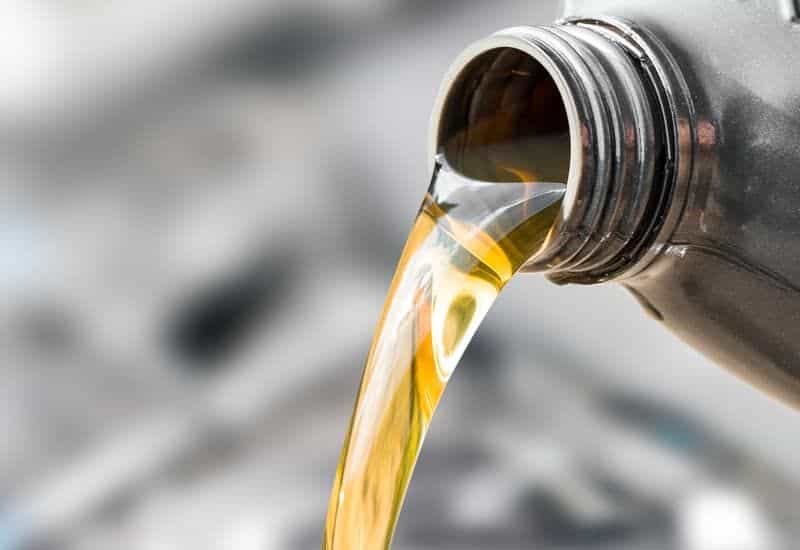
Performing consistent maintenance aligned to manufacturer guidance is crucial for enabling your side-by-side to reach its working life potential.
Here are the key maintenance areas to focus on:
- Fluid Changes & Filter Swaps: Replace engine oil, coolants, brake fluids, and fuel filters based on hourly intervals, not just mileage. Fresh fluids prevent component corrosion and keep critical systems running smoothly.
- Cleaning & Lubrication: Thoroughly wash UTVs after muddy rides to prevent debris buildup, which can lead to early corrosion, rust, and part deterioration. Lubricate pivot points, cables, and levers often to prevent binding or snags.
- Inspections & Part Replacement: Frequently examine tires, steering, and suspension links for signs of excessive wear. Replace early to avoid more costly repairs or failures down the road.
- Follow Maintenance Schedules: Side-by-side builders design service timeline recommendations around longevity – follow them diligently! Set maintenance reminders annually before each riding season starts.
- Off-Season Best Practices: Prep your side-by-side for storage by disconnecting the battery, draining carburetors and fuel lines, using fuel stabilizers, re-greasing parts prone to rust, and applying UV protectants.
Prevent problems before they happen!
Staying vigilant, even when your side-by-side seems to be running perfectly, ensures you get the maximum lifetime hours and years out of your investment.
Getting the Most Value from Your Side-By-Side Investment
To get the most ROI from your UTV over time, focus on maintaining optimal resale value while considering repurposing opportunities later.
- Preserve Resale Value: Clean and protect the exterior, while also keeping service records proving preventative maintenance at appropriate intervals. This appeals to potential buyers, maximizing trade-in or private sale value when upgrading.
- Consider Repurposing Options: Once your side-by-side reaches an age where selling it no longer makes financial sense due to declining value, you can still extend its usefulness in a different capacity before recycling it responsibly. Some owners transform older recreational side-by-sides into lower-speed utility vehicles for hauling tools/materials around large properties. Removing back seating for cargo space, upgrading tow hitches, and adjusting gearing for low-end torque over speed.
- Salvage Still-Good Parts: Even if the engine is shot beyond reasonable repair costs, many components like wheels, tires, batteries, gauges, seats, and accessories often have value and still have years of service left. List these items for sale online to offset the cost of a new machine.
- Practice Sustainable Recycling: Participate in recycling programs through dealers and manufacturers that refurbish and reuse certain metals, oils, and plastics. Keep hazardous components out of landfills through approved disposal channels.
When to Consider Replacing Your Side-By-Side
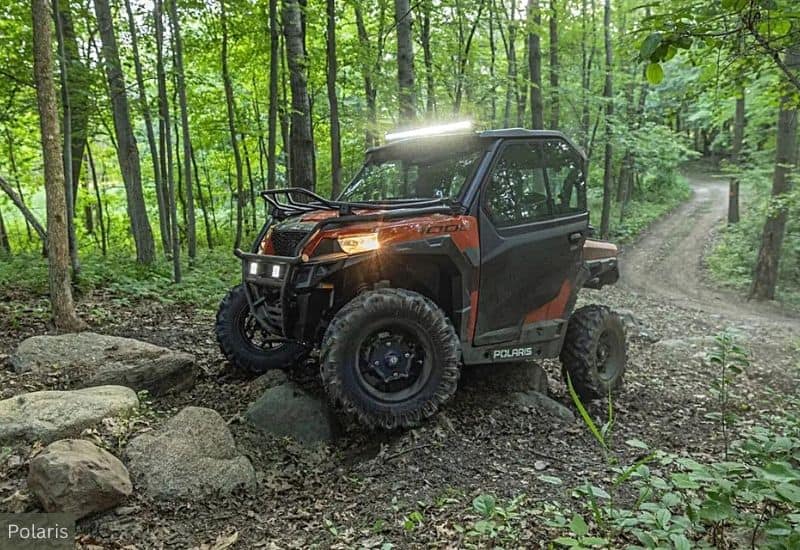
With proper care, most side-by-sides will provide many years of reliable service, but eventually, every UTV has to be retired, due to repair costs, parts availability, performance, and safety.
Repair Costs
As side-by-sides age, issues become more frequent and repairs get pricer, as major components begin to wear out and break.
For example, just take a look at some average repair costs for major components on a UTV:
- Carb Overhaul: $75 – $200
- Clutch Replacement: $300 – $500
- Valve Work: $100 – $250
- Top-End Rebuild: $500 – $700
- Full Engine Rebuild: $2,500 – $3,500
When these costs start to add up it will make less and less sense financially to perform the repairs on an aging machine, as extensive repairs can often cost more than an older side-by-side is even worth.
So at some point in the life of the UTV, (usually around the 10-year mark), it will start to make more sense financially to purchase a new machine as opposed to continue dumping money into an older one.
Parts Availability
As machines age, sourcing OEM (original equipment manufacturer) components can become problematic, especially for off-brand cheaper models.
However, all ATV manufacturers eventually phase out the production of parts for older models over time.
Once this occurs, your only two options for sourcing parts are salvage yards and aftermarket suppliers.
Which often lack much of a warranty and can be far less reliable, compared to new OEM parts directly from the manufacturer.
Performance & Safety
While there often isn’t a dramatic change in performance or safety from one model year to the next, over time there can be a big difference, as modern side-by-sides offer ever-increasing advances in performance, comfort, and safety.
Because of this, owners of aging models have to weigh nostalgic attachment against notable feature gaps, between their older model and newer more advanced options.
To illustrate this, SxS engine tech continues to squeeze more and more power from smaller displacements, offering more horsepower and torque in a smaller lighter package.
Which not only provides additional power but also better handling.
In addition, new side-by-side models will often offer electronic stability control, adjustable speed governors, load monitoring, and other sensors further enhancing control and safety.
Adding it All Up
So when should you replace your machine?
Well, this answer will vary for everyone, depending on their needs, budget, and how they use their side-by-side.
If your current model is constantly in need of repairs, or if the cost of maintenance is starting to exceed the value of the vehicle itself, it might be time to consider an upgrade.
Additionally, if you find that your side-by-side no longer fits your lifestyle, because, for example, you need more seating for family adventures, or you need better performance and handling for competitive events, this might be a good indicator that a new machine could better serve you.
Ultimately, it comes down to weighing the cost of new advancements and features against the value you’re getting from your current side-by-side.
If you think it might be time for an upgrade though, timing your side-by-side replacement around maximum resale value can allow you to efficiently roll proceeds from the sale of your old machine into a new upgraded one.
Frequently Asked Questions
Anything over 10,000 miles is generally considered high miles for a side-by-side. However, factors like maintenance history, riding conditions, and model reliability can greatly influence this number.
5,000 miles is not considered high mileage for a typical recreational side-by-side. Most quality UTV models can last well over 10,000 miles, before being considered high mileage, if properly maintained.
A Polaris RZR can last well over 10,000 miles with proper care and maintenance. This lifespan, however, is highly dependent on riding habits, maintenance schedules, and the conditions in which it’s used.
A Polaris Ranger can typically last well beyond 10,000 miles with proper maintenance and care. This longevity, however, is highly impacted by usage intensity, maintenance regularity, and operating conditions.
Final Thoughts on UTV Life Expectancy
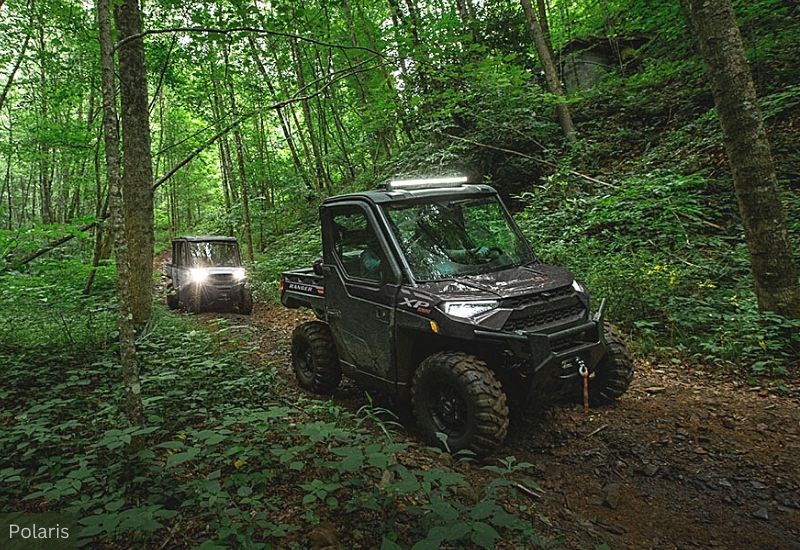
Properly maintaining your machine remains the most vital thing you can do to extend the life of your side-by-side.
Always:
- Follow factory-advised service schedules diligently—don’t cut corners.
- Protect it from harsh elements and moisture when storing.
- Clean your side-by-side after each use, especially if you’ve been driving in muddy or dusty conditions.
- Check and maintain fluid levels, tire pressure, and brake systems consistently.
- Listen to your vehicle, any strange noises or changes in handling should be checked out immediately.
While no side-by-side achieves “unbreakable” status indefinitely, proactive care makes hitting 5,000+ hours, 10,000+ miles, and 10+ years lifespans very achievable for quality side-by-side models.
It’s important to be realistic about escalating repair costs though, over time.
Because once replacement parts dry up or major fixes exceed your vehicle’s resale value, transitioning to a newer upgraded model can be a better choice not only for your enjoyment but also for your wallet.
Recent Posts
Is Can-Am Better Than Polaris? This question has been debated for years, sparking intense debates in off-road communities and showrooms. As two titans in the world of ATVs and UTVs, Can-Am and...
Whether you're an adult looking for a new adventure or introducing your kids to the sport, finding the best beginner dirt bike is crucial to kick-start your off-road journey on the right...

